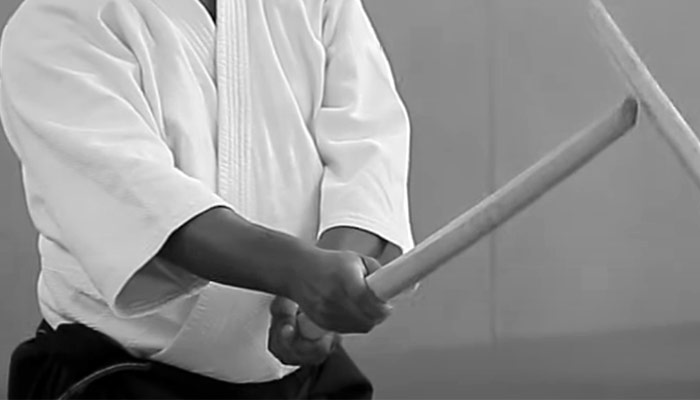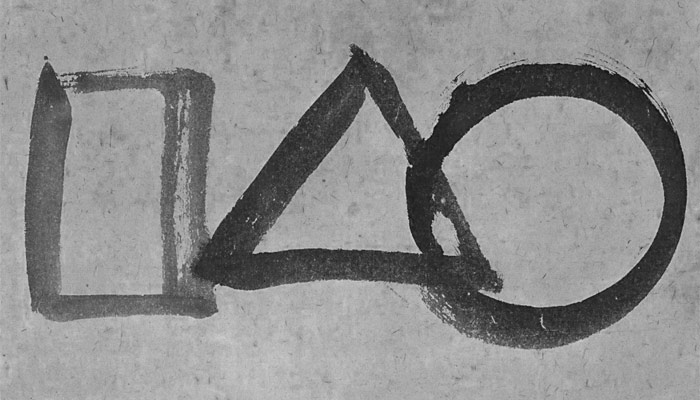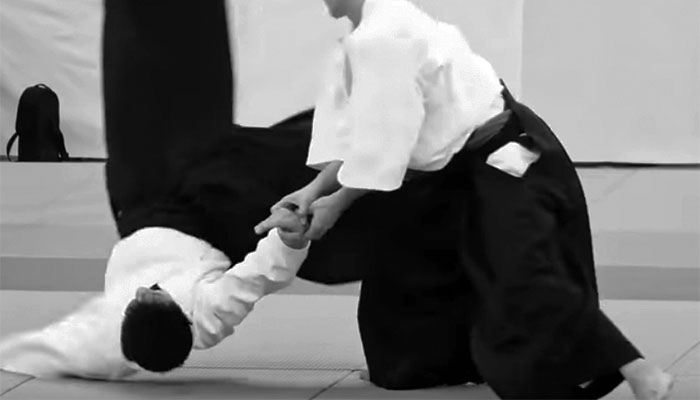DO 道
-
Morihei Ueshiba’s Path from Kenjutsu to Aiki-Ken (Part II)
In 1927, Ueshiba moved to Tokyo and later started teaching in Kobukan 皇武館 dojo. Through his military connections, Ueshiba was later introduced to some of the top martial artists. Among them was Kosaburo Gejo 下条小三郎, a navy commander but also an expert in Yagyu Shinkage Ryu. Gejo was a top student of Yagyu 柳生厳周, the 13th generation head of the Owari Yagyu 尾張柳生 lineage. While Ueshiba and Gejo had more of a friendly relationship rather than a formal teacher/student one, it is generally believed that Ueshiba was exposed to some high level of Yagyu Shinkage Ryu techniques and concepts through this relationship. However, there is also a saying that Gejo…
-
Morihei Ueshiba’s Path from Kenjutsu to Aiki-Ken (Part I)
The origin of Aiki-ken can be traced back to Morihei Ueshiba, the founder of Aikido, and his study of various martial arts styles throughout his life. Some of the major ken-related arts that Ueshiba had exposure to include Yagyu Shinkage Ryu 柳生新陰流, Yagyu Shingan Ryu 柳生心眼流, Daito Ryu 大東流, and Kashima Shinto Ryu 鹿島新当流. In 1902, when Ueshiba was 19, he moved to Tokyo to start a stationery business but returned to Tanabe in less than a year due to a health problem. It was during this short period of time that he trained in Yagyu Shinkage Ryu, but it is unclear who his teacher was. Yagyu Shinkage Ryu was…
-
Kotodama: The Spiritual Power of Words in Japanese Culture and Aikido
Kotodama 言霊 is closely connected with the life and teachings of Morihei Ueshiba, the founder of Aikido. Ueshiba was a deeply spiritual person who drew inspiration from the religious and philosophical traditions of Shinto 神道. Kotodama is a fundamental aspect of Shinto, an indigenous religion of Japan that has been integrated into various Japanese arts and practices, such as martial arts, traditional medicine, and music. Koto 言 means “word,” and dama 霊 means “spirit.” The term can be translated as “the spirit of words.” In kotodama practice, it is believed that each word and sound vibration has its own unique spiritual energy and power. One of the key principles of…
-
Sangen – The Triangle, Circle and Square in Aikido
The founder of Aikido, Morihei Ueshiba, used the symbols of the triangle, circle, and square (△ ○ □) to convey key philosophical concepts central to Aikido. These symbols represent the Sangen 三元 in the Shinto concept of Ichirei Shikon Sangen Hachiriki 一霊四魂三元八力, a framework used to explain the nature of the universe. While a detailed explanation of this concept is beyond the scope of this article, its basic understanding is as follows: Ichirei is the One Spirit, the single source of creation that forms all existence. Shikon refers to the four souls 奇霊, 荒霊, 和霊, 幸霊, which represent Wisdom 智, Bravery 勇, Intimate/Close 親 and Love 愛. Hachiriki refers to…
-
Zanshin and Mushin – The Two Martial ‘Hearts’ of Aikido
Zanshin 残心 is a crucial concept in Japanese martial arts. Literally, Zan 残 means “remaining” or “lingering,” and Shin 心 means “heart,” but it is more accurately understood as “mind” in this context. In Asian culture, Shin extends beyond the physical heart, encompassing both the mind and spirit, blending cognitive and emotional experiences. The mind and heart are seen as deeply interconnected. Thus, Zanshin refers to a state of awareness, alertness, and presence of mind, particularly after executing a technique, even when the opponent appears to have lost the ability to continue. In practice, Zanshin manifests differently across martial arts. For example, in Kyudo 弓道 (Japanese archery), it is the…




